
Minkébé National Park: Gabon's Untouched Wilderness
Explore the untouched wilderness of Minkébé National Park in Gabon, a sanctuary for wildlife and a paradise for nature enthusiasts seeking adventure and tranquility.
Minkébé National Park is a vast, pristine wilderness located in the heart of Gabon. This national park covers over 7,000 square kilometers of lush rainforest, teeming with diverse wildlife. Visitors to Minkébé can expect a truly wild experience, far removed from the hustle and bustle of modern life. The park is home to elephants, gorillas, and a myriad of bird species, making it a haven for nature lovers and wildlife enthusiasts. One of the unique features of Minkébé National Park is its dense forest, which remains largely unexplored and offers a sense of adventure to those who visit. The park’s remote location means that it is not heavily trafficked, allowing for an intimate experience with nature. Trekking through the forest, visitors can encounter rare plant species and observe the complex ecosystems that thrive in this untouched environment. For those interested in conservation, Minkébé National Park plays a critical role in protecting endangered species. The park's efforts to combat poaching and preserve its biodiversity are essential for maintaining the ecological balance of the region. Visitors can learn about these conservation efforts and the importance of preserving natural habitats for future generations.
Local tips in Minkébé National Park
- Hire a local guide to navigate the dense forest and enhance your wildlife spotting experience.
- Pack light but include essentials like insect repellent, sturdy boots, and weather-appropriate clothing.
- Visit during the dry season (June to September) for easier trekking and better wildlife sightings.
- Respect the natural environment and follow guidelines to minimize your impact on the park.
- Ensure you have all necessary permits and paperwork before embarking on your journey.
Minkébé National Park: Gabon's Untouched Wilderness
Minkébé National Park is a vast, pristine wilderness located in the heart of Gabon. This national park covers over 7,000 square kilometers of lush rainforest, teeming with diverse wildlife. Visitors to Minkébé can expect a truly wild experience, far removed from the hustle and bustle of modern life. The park is home to elephants, gorillas, and a myriad of bird species, making it a haven for nature lovers and wildlife enthusiasts. One of the unique features of Minkébé National Park is its dense forest, which remains largely unexplored and offers a sense of adventure to those who visit. The park’s remote location means that it is not heavily trafficked, allowing for an intimate experience with nature. Trekking through the forest, visitors can encounter rare plant species and observe the complex ecosystems that thrive in this untouched environment. For those interested in conservation, Minkébé National Park plays a critical role in protecting endangered species. The park's efforts to combat poaching and preserve its biodiversity are essential for maintaining the ecological balance of the region. Visitors can learn about these conservation efforts and the importance of preserving natural habitats for future generations.
When is the best time to go to Minkébé National Park?
Iconic landmarks you can’t miss
Sibang Arboretum
Explore the natural beauty of Sibang Arboretum in Libreville, a peaceful park showcasing Gabon's unique flora and tranquil landscapes.
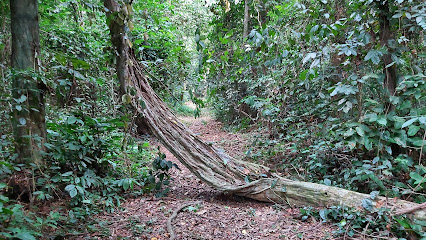
Village des Artisans
Explore the vibrant Village des Artisans in Libreville for unique Gabonese handicrafts and an immersive cultural experience.
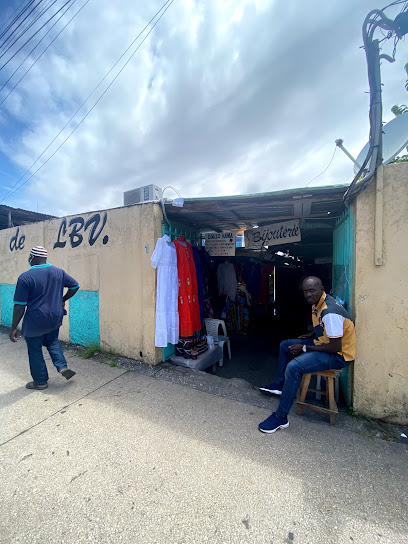
Church of St. Michael Nkembo
Explore the Church of St. Michael Nkembo in Libreville, a perfect blend of stunning architecture and serene atmosphere amidst Gabon's vibrant culture.
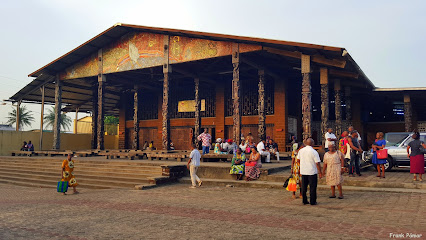
Cathédrale Sainte Marie
Discover the architectural beauty and cultural significance of Cathédrale Sainte Marie, a must-see landmark in Libreville, Gabon.
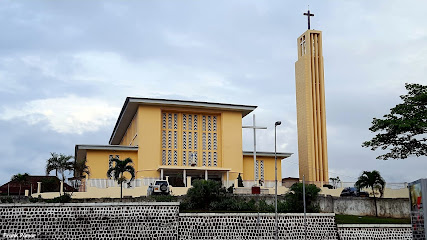
Akanda National Park
Explore Akanda National Park, a breathtaking national park near Libreville, Gabon, known for its stunning biodiversity and serene landscapes.
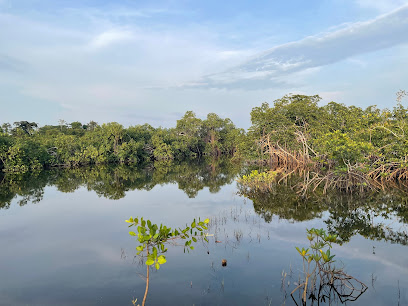
Lopé National Park
Discover the breathtaking biodiversity and rich cultural heritage of Lopé National Park, a UNESCO World Heritage site in Gabon.
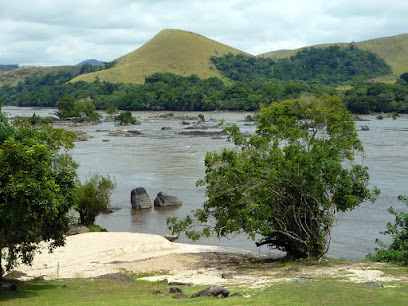
National Museum of Arts, Rites and Traditions of Gabon
Discover Gabon's cultural heritage at the National Museum of Arts, Rites and Traditions, showcasing art, rituals, and traditions that define this vibrant nation.

Gabon Travel and Tours
Discover Gabon's biodiversity and rich culture with tailored tours and expert guides from Gabon Travel and Tours, your key to an unforgettable adventure.
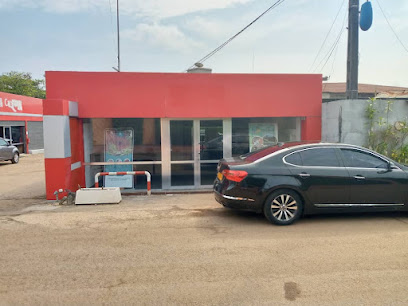
Loango national Park, Lodge & wildlife camps
Discover the pristine wilderness and unique wildlife of Loango National Park, Gabon - a paradise for nature lovers and adventure seekers alike.
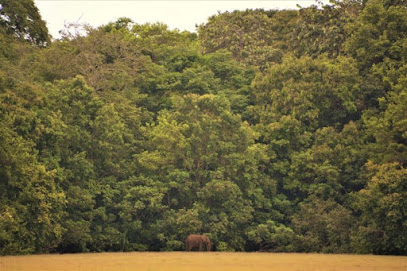
241TOUR
Experience the beauty and adventure of Libreville with guided tours from 241TOUR, your gateway to Gabon's stunning landscapes and rich culture.

Clark
Explore the peaceful Clark Shrine in Montagne Sainte, Libreville, a spiritual retreat that embodies Gabon's rich cultural heritage amidst nature's beauty.
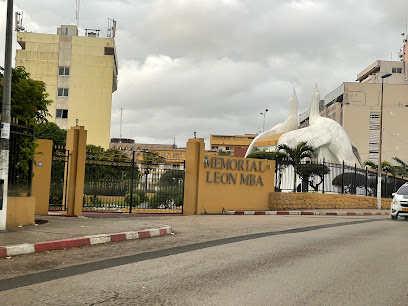
Association MEKOK ME BONE
Explore the lush landscapes and vibrant wildlife of Association MEKOK ME BONE, a national forest oasis in Libreville, Gabon.
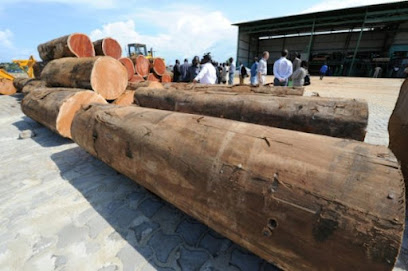
Unmissable attractions to see
Village des Artisans
Explore the Village des Artisans in Libreville for authentic Gabonese crafts, vibrant culture, and unique souvenirs that reflect the artistry of local artisans.
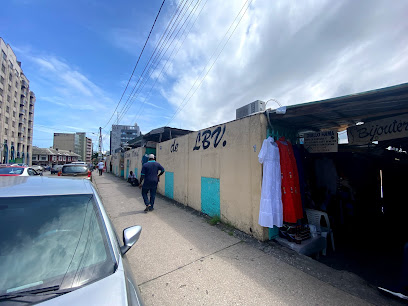
Cathédrale Sainte Marie
Explore the stunning Cathédrale Sainte Marie in Libreville, a magnificent symbol of Gabonese faith and culture, adorned with breathtaking architecture.
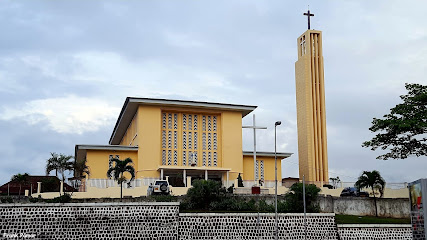
Lopé National Park
Explore the stunning landscapes and diverse wildlife at Lopé National Park, a UNESCO World Heritage Site in Gabon, perfect for nature lovers and adventurers.
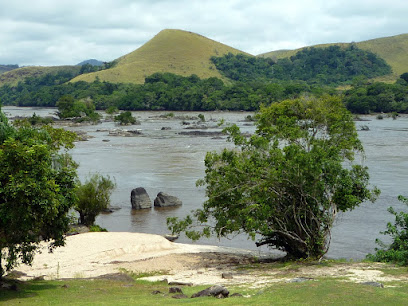
Liana Bridge of Poubara
Explore the breathtaking Liana Bridge of Poubara, a natural wonder in Gabon, where adventure meets the tranquility of lush rainforest.
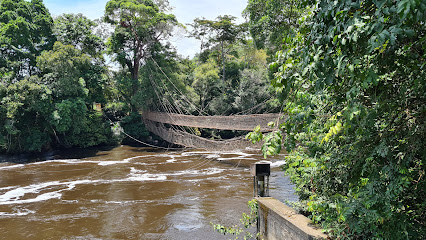
Parc de la Lekedi
Explore the enchanting wildlife of Gabon's Parc de la Lekedi, a sanctuary of biodiversity in the heart of Bakoumba, perfect for nature lovers and adventure seekers.
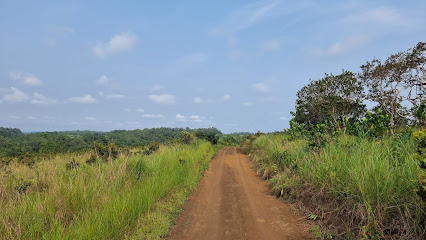
Loango national Park, Lodge & wildlife camps
Discover the stunning landscapes, diverse wildlife, and serene beaches of Loango National Park, a hidden gem in Gabon perfect for eco-tourism and adventure.
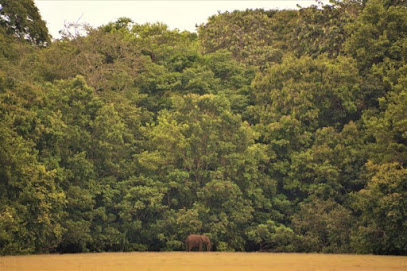
Ndossi Village
Experience the perfect blend of adventure and relaxation at Ndossi Village, the ultimate destination for nature lovers and thrill-seekers in Libreville, Gabon.
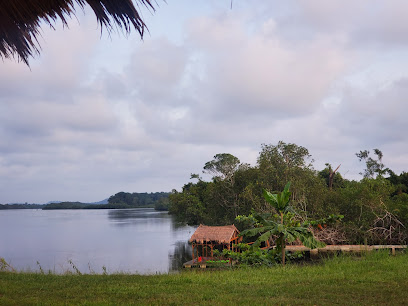
Clark
Discover the tranquility of Clark, a serene shrine in Libreville, where spirituality and community intertwine amidst lush surroundings.
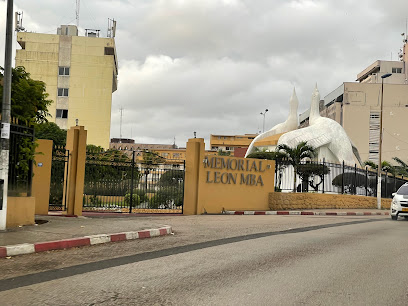
Essential places to dine
La Voile Rouge
Discover La Voile Rouge: A Culinary Gem in Libreville Offering Fresh Local Cuisine and Unforgettable Dining Experiences.
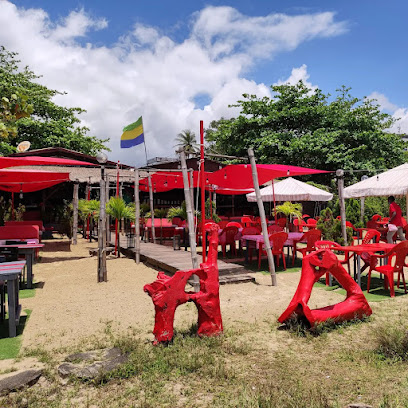
Beach Club
Experience the best of French and African cuisine at Beach Club in Libreville—where culinary excellence meets stunning ocean views.
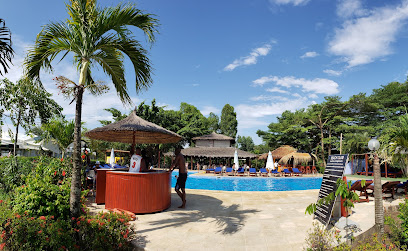
Lamaia Lounge Bar & Restaurant
Discover exceptional dining at Lamaia Lounge Bar & Restaurant in Libreville - where local flavors meet vibrant nightlife.
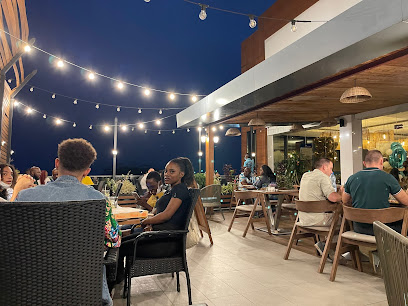
Marina Social Beach
Discover delicious tapas at Marina Social Beach in Port-Gentil - where exquisite flavors meet stunning ocean views.
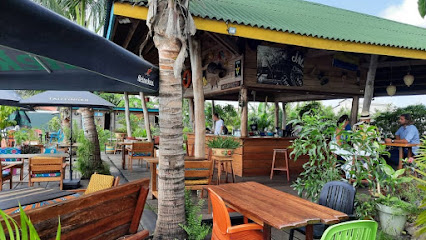
Amigo's Restaurant
Experience authentic Gabonese cuisine at Amigo's Restaurant in Libreville - where every meal tells a story.

L'Odika
Experience authentic Gabonese cuisine at L'Odika in Libreville—where rich flavors meet warm hospitality.

L’iroko
Discover the vibrant ambiance of L’iroko in Libreville - where local flavors meet international cuisine in a stylish lounge setting.
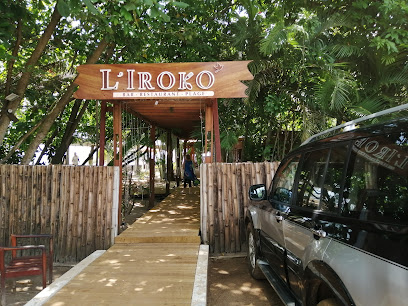
Restaurant Le Mississipi
Experience the vibrant flavors of Gabon at Restaurant Le Mississipi in Libreville - where local meets international cuisine.
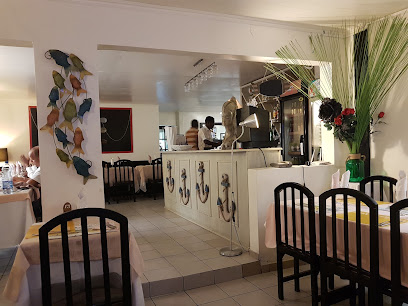
King of Tacos
Experience the best French tacos in Libreville at King of Tacos - where flavor meets hospitality.
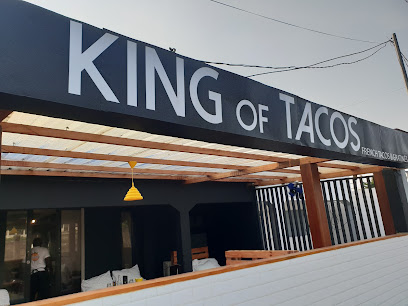
Restaurant LYNN'S
Experience authentic Gabonese cuisine and delightful international dishes at Restaurant LYNN'S in the heart of Libreville.
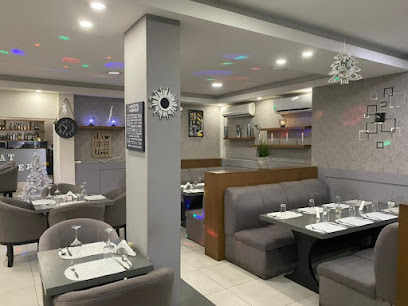
Glass - Libreville
Discover exquisite dining at Glass in Libreville - where local flavors meet international cuisine in a vibrant setting.
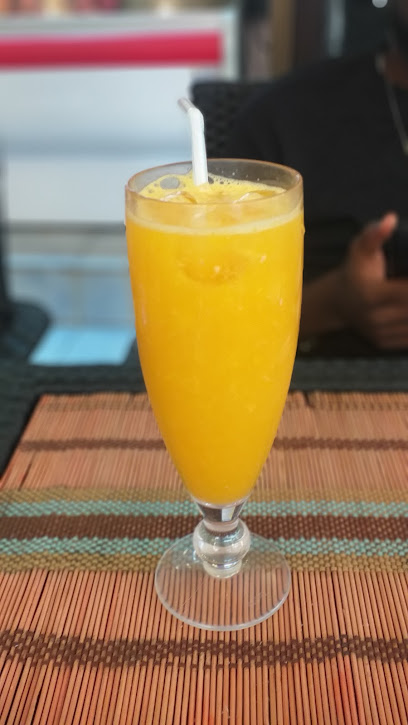
River Lodge Resort
Discover tranquility and adventure at River Lodge Resort in Point Denis - where nature meets luxury.
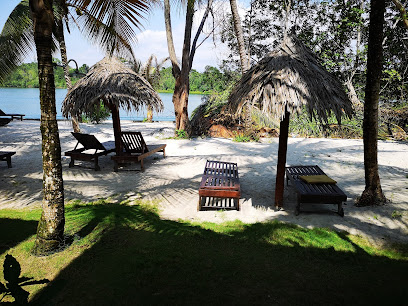
Restaurant Nouveau Petit Chalut
Discover fresh seafood and authentic Gabonese cuisine at Restaurant Nouveau Petit Chalut in Libreville - a must-visit culinary destination.
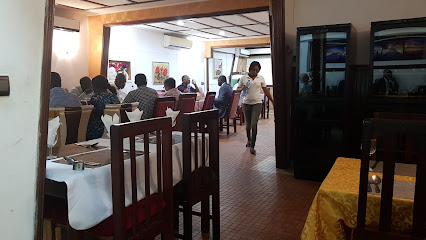
Joe's Restaurant & Bar
Experience local flavors and vibrant atmosphere at Joe's Restaurant & Bar in Port-Gentil - a must-visit dining destination.
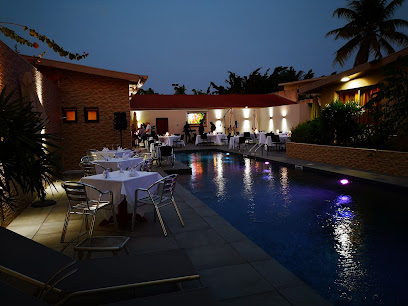
Idiora Restaurant-Bar
Experience exquisite dining at Idiora Restaurant-Bar in Libreville, where traditional Gabonese flavors meet modern culinary excellence.
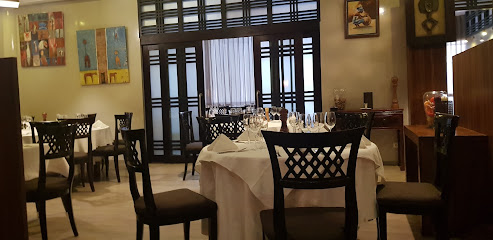
Markets, malls and hidden boutiques
Village des Artisans
Experience the vibrant culture of Gabon at the Village des Artisans, where local craftsmanship meets rich artistic heritage in Libreville.
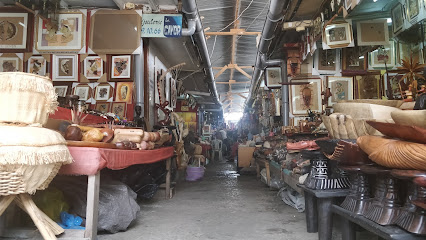
Sogame Equip
Explore Sogame Equip in Libreville for all your hardware needs, featuring a wide range of tools, materials, and expert assistance in Gabon.
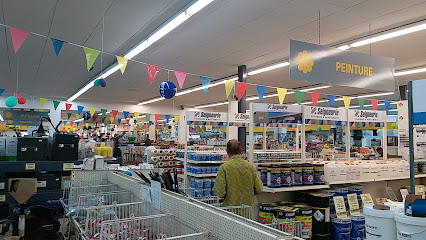
Cathédrale Sainte Marie
Discover the architectural beauty and spiritual significance of Cathédrale Sainte Marie in Libreville, Gabon, a must-visit for every traveler.

Résidence Hotelière Dounia Park Eco Lodge
Experience tranquility and nature at Résidence Hotelière Dounia Park Eco Lodge, an eco-friendly retreat in the heart of Akanda, Gabon.
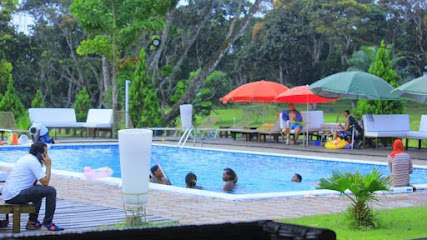
ABC mall
Discover the lively ABC Mall in Libreville, where shopping, dining, and local culture come together in a vibrant atmosphere.

Akanda National Park
Explore the untouched beauty of Akanda National Park, a serene retreat offering diverse wildlife and stunning coastal landscapes near Libreville.
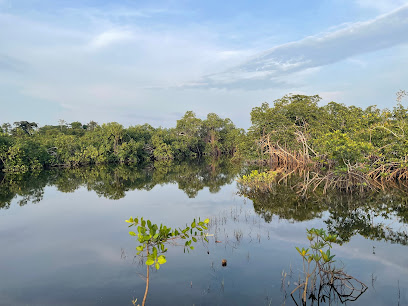
Lopé National Park
Explore the natural wonders of Lopé National Park, a UNESCO World Heritage site bustling with wildlife and rich cultural heritage in Gabon.
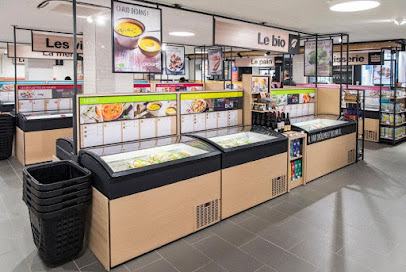
Residence Oceane
Discover the serene elegance of Residence Oceane in Libreville, a perfect retreat for travelers seeking comfort and luxury in Gabon.

Dja Faunal Reserve
Explore the breathtaking Dja Faunal Reserve in Cameroon, a UNESCO World Heritage Site, where diverse wildlife and lush rainforests await.
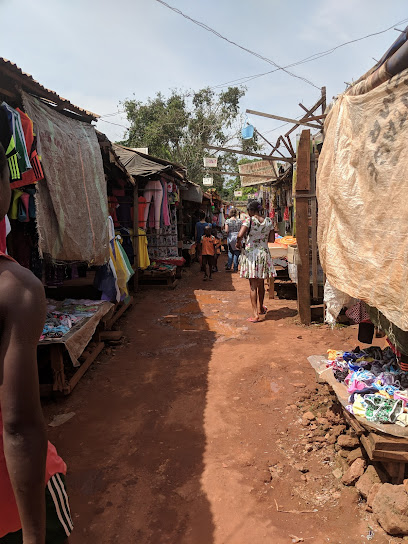
Michel Montaigne
Discover the cultural significance of the Michel Montaigne School, a historic educational institution in Libreville that embodies the spirit of Gabonese community and learning.
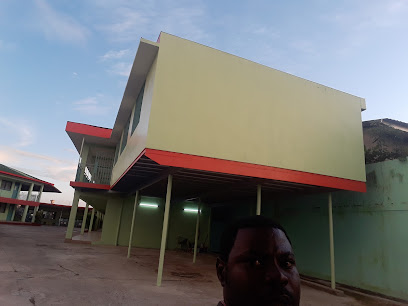
Odzala-Kokoua National Park
Explore the pristine wilderness of Odzala-Kokoua National Park, a sanctuary for wildlife and a paradise for adventure seekers in the Congo Basin.
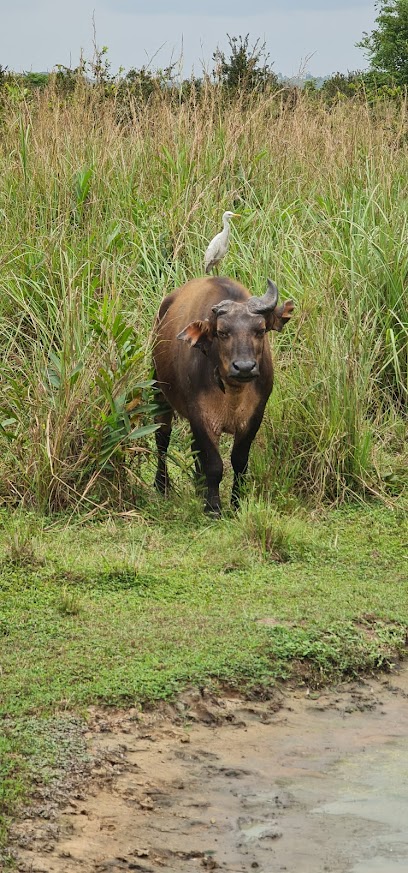
Assala Energy
Explore the corporate landscape of Gabon at Assala Energy, a hub of innovation and sustainability in Port-Gentil's thriving oil and gas sector.
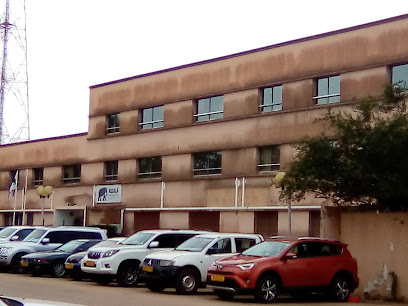
LES CHOCOLATS GABONAIS DE JULIE
Discover the sweet side of Gabon at Les Chocolats Gabonais de Julie, where artisan chocolates meet local culture in an enchanting café setting.
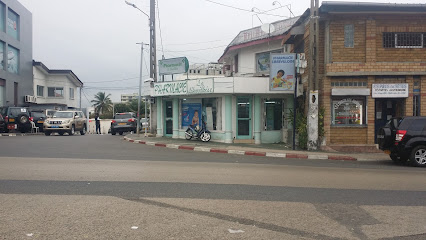
Minkébé National Park
Explore the breathtaking Minkébé National Park, a UNESCO World Heritage site filled with rich biodiversity and stunning landscapes in Gabon.
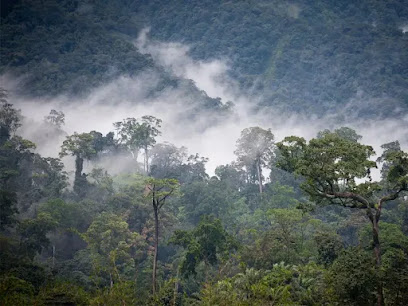
Les petits pots de l'Ogooué
Experience the rich flavors of Gabon at Les Petits Pots de l'Ogooué, the premier deli in Libreville for delightful culinary creations.

Essential bars & hidden hideouts
La Voile Rouge
Experience the vibrant flavors of Gabon at La Voile Rouge, a culinary oasis in Libreville, perfect for food lovers and cultural explorers.
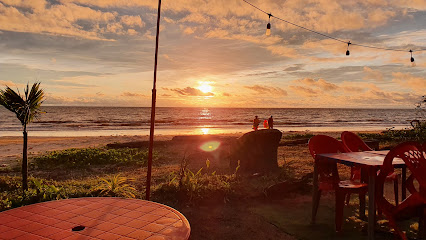
Le Moulin d'Okala
Experience the vibrant culinary scene of Libreville at Le Moulin d'Okala, where local flavors meet international cuisine in a lively atmosphere.
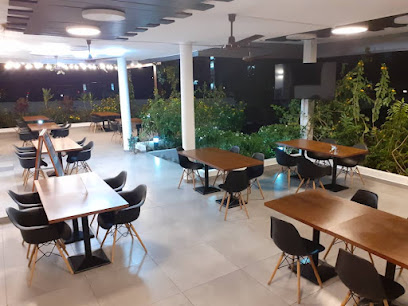
Marina Social Beach
Discover the vibrant culinary scene at Marina Social Beach, where delectable tapas meet stunning beachside views in Port-Gentil.
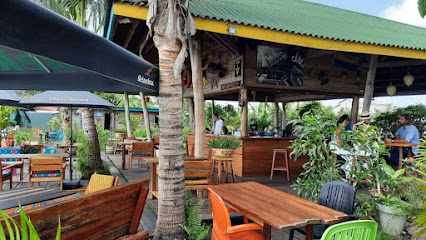
Bodega Mbolo
Discover the vibrant culinary scene of Libreville at Bodega Mbolo, where local flavors meet international delights in a lively bar setting.
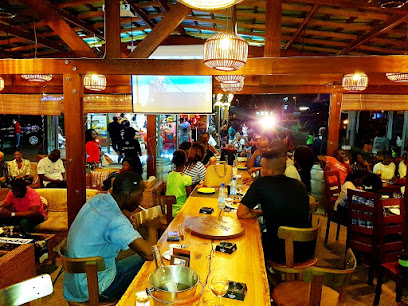
L'Odika
Experience the rich flavors of Africa at L'Odika, where culinary excellence meets warm hospitality in the heart of Libreville.
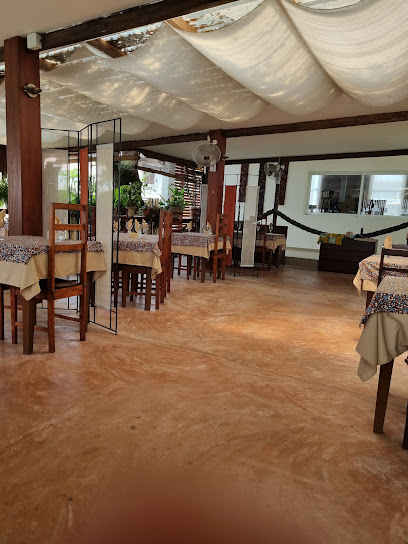
L’iroko
Experience the vibrant flavors and welcoming atmosphere of L’iroko, where Gabonese culture meets culinary excellence in Libreville.
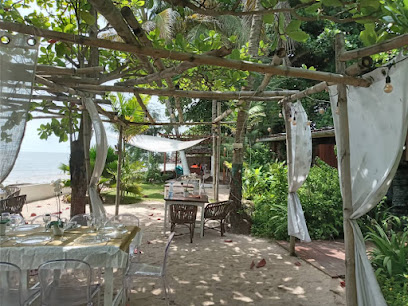
Yoka Sports Bar
Experience the excitement of sports in Libreville at Yoka Sports Bar, the ultimate gathering place for fans and fun seekers alike.
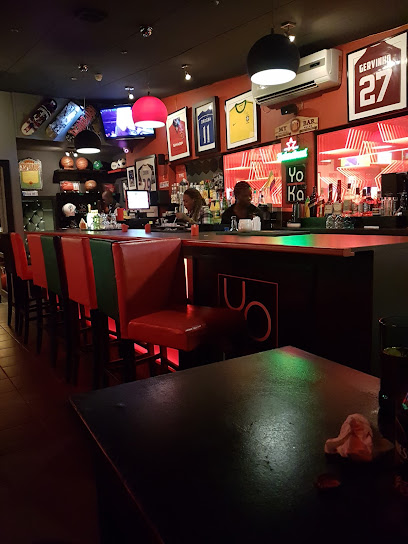
Restaurant Mystic Bantu
Experience the authentic flavors of Gabon at Restaurant Mystic Bantu, a culinary haven in Libreville that celebrates local culture and cuisine.

The Lantern
Discover the vibrant flavors of Libreville at The Lantern, where every bite tells a story in a lively tapas bar atmosphere.
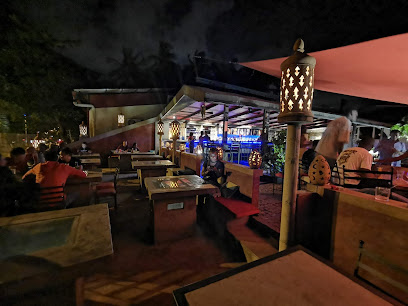
Joe's Restaurant & Bar
Discover the vibrant culinary scene at Joe's Restaurant & Bar in Port-Gentil, where local flavors meet international cuisine in a cozy atmosphere.
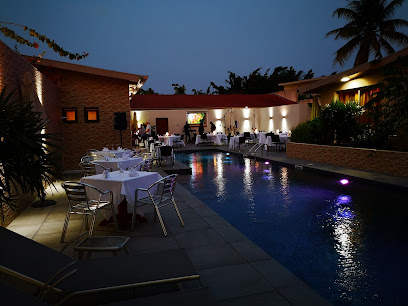
Entre nous Restaurant & Bar
Experience the vibrant culture of Gabon at Entre Nous Restaurant & Bar, where delicious cuisine meets lively ambiance in the heart of Libreville.
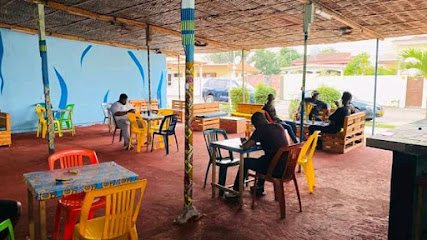
Yoka_Lounge
Experience the tranquil elegance of Yoka Lounge in Libreville, where relaxation meets vibrant local culture in a cozy setting.
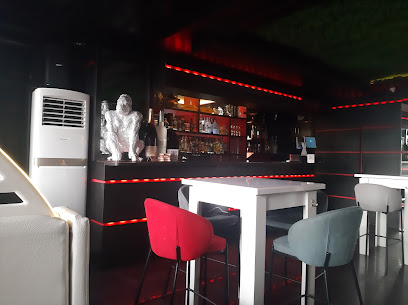
Idiora Restaurant-Bar
Explore the vibrant culinary scene of Libreville at Idiora Restaurant-Bar, where local flavors meet international cuisine in a lively atmosphere.

Masaya's garden
Experience the taste of Gabon in a tranquil garden setting at Masaya's Garden, a must-visit restaurant in Libreville.

Minkébé National Park
Explore the breathtaking wilderness of Minkébé National Park, a UNESCO World Heritage site with rich biodiversity and stunning landscapes.
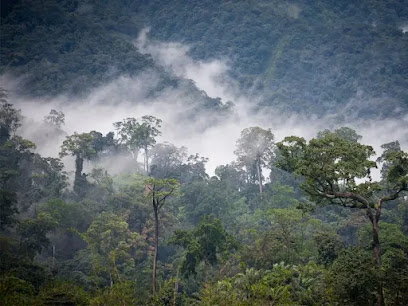
Local Phrases about Minkébé National Park
-
- HelloMbolo
[mboh-loh] - GoodbyeO dabing
[oh dah-beeng] - YesEwe
[eh-weh] - NoAye
[ah-yeh] - Please/You're welcomeOvindo
[oh-veen-doh] - Thank youMeyé
[may-yeh] - Excuse me/SorryO dabing
[oh dah-beeng] - How are you?Mvondo
[mvoon-doh] - Fine. And you?Mvondo. Ovondo?
[mvoon-doh. oh-voon-doh] - Do you speak English?Ondaye mende English?
[ohn-dah-yeh men-deh English] - I don't understandO m'obula
[oh moh-boo-lah]
- HelloMbolo
-
- I'd like to see the menu, pleaseMba nde menu
[mbah n-deh meh-noo] - I don't eat meatO nyeh na nyama
[oh nyeh nah nyah-mah] - Cheers!Mabeyi!
[mah-bay-yee] - I would like to pay, pleaseMba nde kwendja
[mbah n-deh kwen-jah]
- I'd like to see the menu, pleaseMba nde menu
-
- Help!Mambé!
[mam-beh] - Go away!Wora!
[woh-rah] - Call the Police!Nde ye Police!
[n-deh yeh Police] - Call a doctor!Nde ye doktéra!
[n-deh yeh dohk-teh-rah] - I'm lostO nyeh na né
[oh nyeh nah neh] - I'm illO nyeh na nda
[oh nyeh nah ndah]
- Help!Mambé!
-
- I'd like to buy...Mba nde leka...
[mbah n-deh leh-kah] - I'm just lookingO nyeh nye mba
[oh nyeh nyeh mbah] - How much is it?Nde agwé?
[n-deh ah-gway] - That's too expensiveNde a nyamé
[n-deh ah nyah-meh] - Can you lower the price?O nde nyé lekwé?
[oh n-deh nyeh leh-kway]
- I'd like to buy...Mba nde leka...
-
- What time is it?Nde ma yé?
[n-deh mah yay] - It's one o'clockYé na nyen
[yay nah nyehn] - Half past (10)Na kwan (10)
[nah kwahn (10)] - MorningNyok
[nyohk] - AfternoonNyok na ndomo
[nyohk nah ndoh-moh] - EveningNyok na mbot
[nyohk nah mboht] - YesterdayNya nyen
[nyah nyehn] - TodayNyen
[nyehn] - TomorrowNa nyen
[nah nyehn] - 1Nyen
[nyehn] - 2Mbia
[mbee-ah] - 3Nyig
[nyeeg] - 4Nyigo
[nyee-goh] - 5Nyigbe
[nyeeg-beh] - 6Nyigbembi
[nyeeg-behm-bee] - 7Nyigbe na nyen
[nyeeg-beh nah nyehn] - 8Nyigbe na mbia
[nyeeg-beh nah mbee-ah] - 9Nyigbe na nyig
[nyeeg-beh nah nyee-g] - 10Nyigbe na nyigo
[nyeeg-beh nah nyee-goh]
- What time is it?Nde ma yé?
-
- Where's a/the...?Nde a...
[n-deh ah...] - What's the address?Nde a kodi?
[n-deh ah koh-dee] - Can you show me (on the map)?O nde nyé nji (na map)?
[oh n-deh nyeh n-jee (nah map)] - When's the next (bus)?Nde a ndéké (bus)?
[n-deh ah ndeh-kay (bus)] - A ticket (to ....)Nde ndé (to ....)
[n-deh n-deh (to ....)]
- Where's a/the...?Nde a...
History of Minkébé National Park
-
Minkébé National Park, located in the dense rainforests of northern Gabon, was formed as part of the Congo Basin, one of the most critical ecosystems on the planet. The region has been inhabited for thousands of years by indigenous peoples, including the Pygmy and Bantu tribes, who have lived in harmony with the forest, relying on its rich biodiversity for their daily sustenance and cultural practices.
-
During the late 19th and early 20th centuries, Gabon came under French colonial rule. The lush forests of Minkébé were exploited for their valuable timber and minerals. Colonial exploitation led to the establishment of logging camps and small mining operations, dramatically altering the landscape and disrupting the lives of the indigenous populations. The park's rich biodiversity was under threat during this period of intense resource extraction.
-
After Gabon gained independence from France in 1960, the country began to focus on conservation and sustainable management of its natural resources. Recognizing the ecological significance of Minkébé, the Gabonese government, along with international conservation organizations, initiated efforts to protect the area. These efforts culminated in the establishment of Minkébé National Park in 2002, as part of Gabon's broader initiative to create a network of national parks.
-
Minkébé National Park was officially established in 2002 by presidential decree, covering an area of approximately 7,570 square kilometers. The park was created to preserve the unique biodiversity of the Congo Basin and to protect the habitats of endangered species, including forest elephants, gorillas, and leopards. It is one of the largest national parks in Central Africa and plays a crucial role in regional conservation efforts.
-
Despite its protected status, Minkébé National Park faces numerous challenges, including illegal logging, poaching, and mining activities. Conservation organizations, both local and international, have been actively working to address these issues through anti-poaching patrols, community engagement, and sustainable development programs. Significant achievements include the reduction of elephant poaching and the successful reforestation of degraded areas within the park.
-
Minkébé National Park is not only a haven for wildlife but also a place of cultural significance for the indigenous communities. Traditional practices and knowledge of the forest are integral to the cultural heritage of the local people. In recent years, the park has become a focal point for ecotourism, attracting visitors who are eager to experience its pristine landscapes and diverse wildlife. Ecotourism initiatives aim to provide sustainable livelihoods for local communities while promoting conservation awareness.
Minkébé National Park Essentials
-
Minkébé National Park is located in northeastern Gabon. The closest major city is Libreville, the capital of Gabon, which has an international airport, Léon-Mba International Airport. From Libreville, you can take a domestic flight to Makokou, the nearest town with an airstrip that serves as a gateway to the park. From Makokou, you will need to arrange for a 4x4 vehicle or a guided tour to reach the park, as the road conditions can be challenging, especially during the rainy season.
-
Within Minkébé National Park, transportation options are limited to 4x4 vehicles, boats, and guided walking tours. The terrain is rugged, and many areas are accessible only by specialized vehicles or on foot. It is highly recommended to hire a local guide who is familiar with the park's layout and can navigate the challenging conditions. Boat trips along the park's waterways offer unique perspectives of the wildlife and scenery.
-
The official currency in Gabon is the Central African CFA Franc (XAF). Credit cards are accepted in larger hotels and some upmarket establishments in Libreville, but cash is essential when traveling to rural areas like Minkébé National Park. ATMs are available in Libreville and Makokou, but it is advisable to carry sufficient cash, as access to banking services is extremely limited within the park.
-
Minkébé National Park is generally safe for tourists, but due to its remote location, it is important to take certain precautions. Always travel with a guide, and avoid venturing into unknown areas alone. Wildlife can be unpredictable, so maintain a safe distance from animals and follow your guide's instructions. There are no specific high-crime areas targeting tourists within the park, but it is always wise to stay vigilant and secure your belongings.
-
In case of emergency, communication can be challenging due to limited cell service in the park. It is crucial to carry a satellite phone or a two-way radio. The nearest medical facilities are in Makokou, so make sure to have a well-stocked first aid kit and any necessary medications. Having travel insurance that covers emergency evacuations is highly recommended. Local guides are trained in basic first aid and can assist in case of minor injuries.
-
Fashion: Do wear lightweight, breathable clothing and sturdy footwear suitable for trekking. Avoid bright colors that may disturb wildlife. Religion: Do respect local customs and traditions when interacting with local communities. Public Transport: Do be prepared for long and bumpy rides if using local transport to reach the park. Greetings: Do greet people with a smile and a handshake. Learning a few phrases in French can be helpful. Eating & Drinking: Do try local dishes if offered, but ensure food is well-cooked to avoid illness. Don't drink tap water; always use bottled or purified water.
-
To experience Minkébé National Park like a local, engage with the local guides and rangers who have extensive knowledge of the park's flora and fauna. Participate in a traditional fishing trip or a guided night walk to observe nocturnal wildlife. Visit nearby local villages to learn about the culture and lifestyle of the indigenous people. Respect the environment by following 'leave no trace' principles and supporting eco-friendly tourism initiatives.
Trending Landmarks in Minkébé National Park
Nearby Cities to Minkébé National Park
-
Things To Do in Ebolowa
-
Things To Do in Yaoundé
-
Things To Do in Bertoua
-
Things To Do in Kribi
-
Things To Do in Mbini
-
Things To Do in Edea
-
Things To Do in Bafia
-
Things To Do in Lambaréné
-
Things To Do in Libreville
-
Things To Do in Douala
-
Things To Do in Tiko
-
Things To Do in Limbe
-
Things To Do in Buea
-
Things To Do in Nkongsamba
-
Things To Do in Foumban







